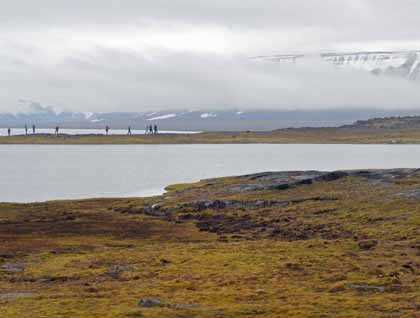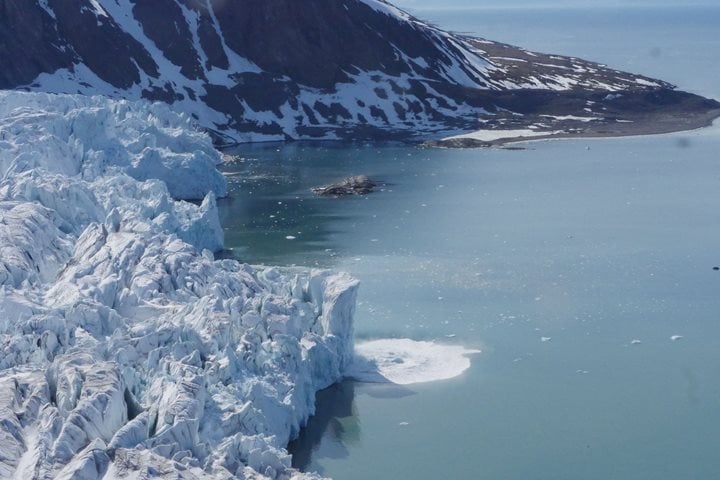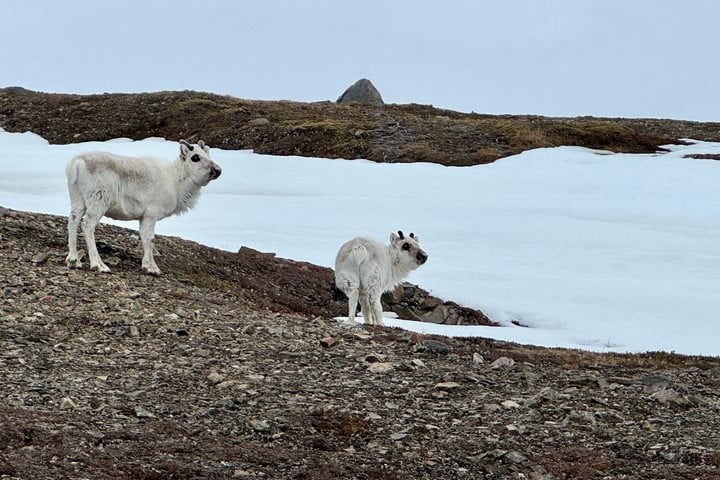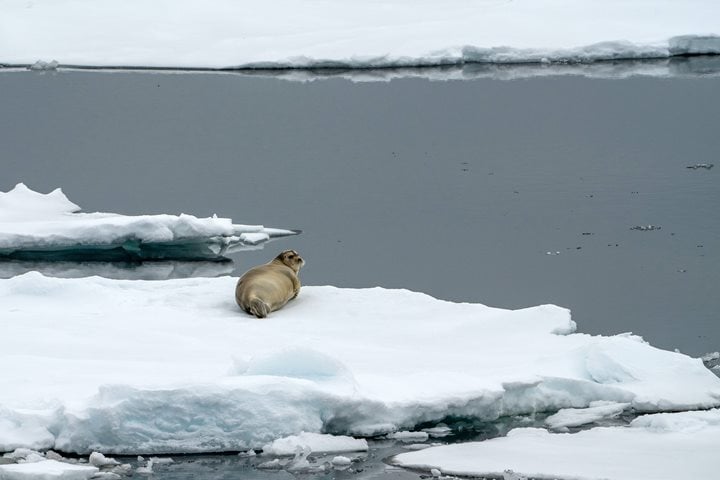The morning hours of the summer solstice found the bridge occupied by early birds; this morning greeted us with a view hampered by a rolling wall of mist. Like a magnet, the bridge draws guests out of bed and up the winding steps. Its drawing force lies somewhere among the windows tilted toward action, ample seating, numerous binoculars, tantalizing charts and captivating personnel. The expedition leader actively pointed out the land breaking free from the mist, and as naturalists sauntered in, the conversation gave way to the number of kayaks needed, patrol routes, and hike leaders for later excursions.
For our first excursion we cruised southward through the bay of Storfjord towards the island of Edgeoya. Conditions were still quite foggy, but the bay of Russebukta was clear enough to allow us to disembark and take out the kayaks. While kayaking off shore today, there were several barnacle geese spotted on a rocky wall. This species of goose arrives in Svalbard in May, and remains here until September, feeding on tundra vegetation, and nests near the freshwater ponds on the damp surface. The Svalbard reindeer could also be seen grazing on shore. Additionally, hikers spotted three young reindeer calves. The calves were likely less than a month old as reindeer usually give birth in the month of May.
Having seen more of a desert landscape the previous day, today’s tundra was rich with Arctic vegetation, and the soggy ground bulged and cracked with tiny streams and ponds breaking up the landscape. The spongy softness of the tundra is called the active layer, and holds its squishy texture due to the layer of permafrost directly beneath it. The ground below the active layer is hard and frozen, which means the ground above it absorbs all of the water as the ice melts, creating the soft and spongy surface that hikers enjoyed.
Hikers and naturalists were excited to see birds called red phalarope, which exhibit a rare trait called reverse sexual dimorphism. Most bird species are known for the male being brightly colored and the female having a dull coloration. This is because the males must be bright to attract the females, and the females need to camouflage while sitting on their nest. With this bird, it is the opposite. The females are a bright rusty-red color on their body, with brown, grey, and white feathers on their wings. The males of this species are actually responsible for incubating and rearing the young, so their coloration is more muted. The colorful females are known to be polyandrous, meaning they have more than one mate.
Another rare bird that we spotted today, the king eider, is not seen as often as the common eider. While the body of the duck is still black and white, it has a distinctive orange spot on its forehead. Near the mud flats we also saw the purple sandpiper, which feed on insects found near the freshwater ponds.
After our hike, we took the Zodiac back to the ship and it was time for the polar plunge. The water temperature here today was around 34 degrees Fahrenheit, and some of the brave guests who jumped in the water said it took their breath away. The record for the most time spent in the water during a polar plunge was broken, topping out at three minutes! After the polar plunge, many guests recovered from the cold temperatures in the sauna on the top deck.
As we move south and venture back towards Spitsbergen, we are on the lookout for whales. Today at dinner, guests spotted a spouting whale in the distance… a sign for hopefully more whales in our future.






